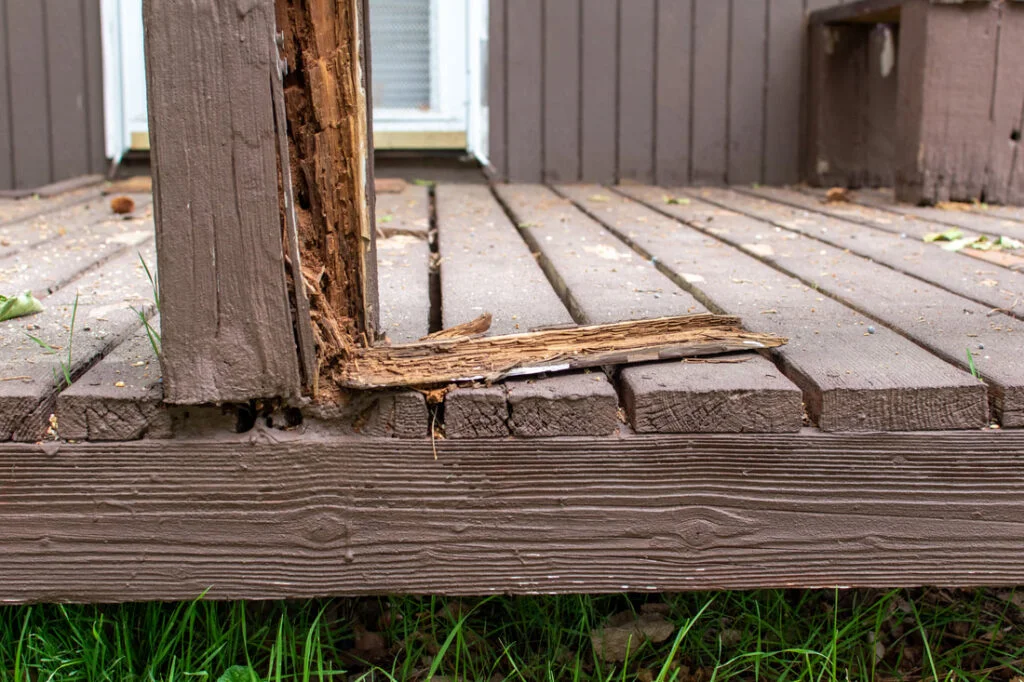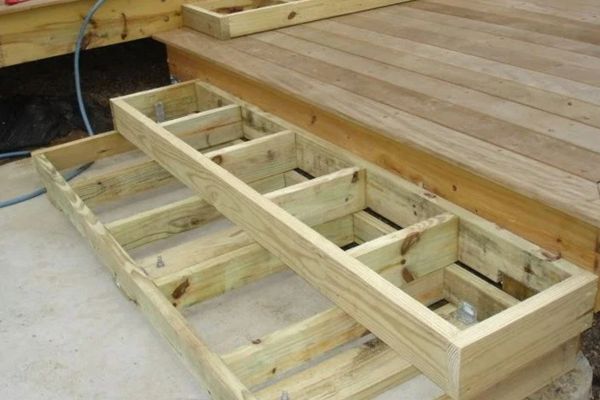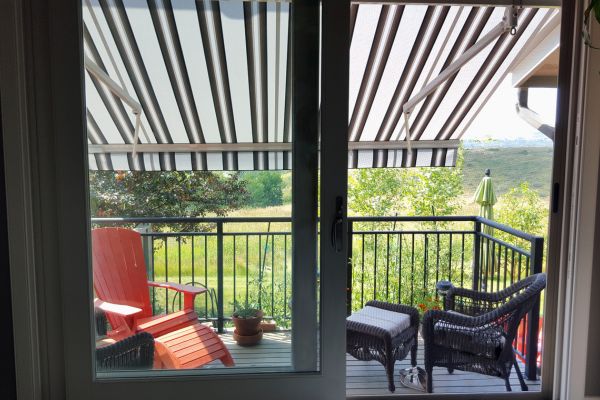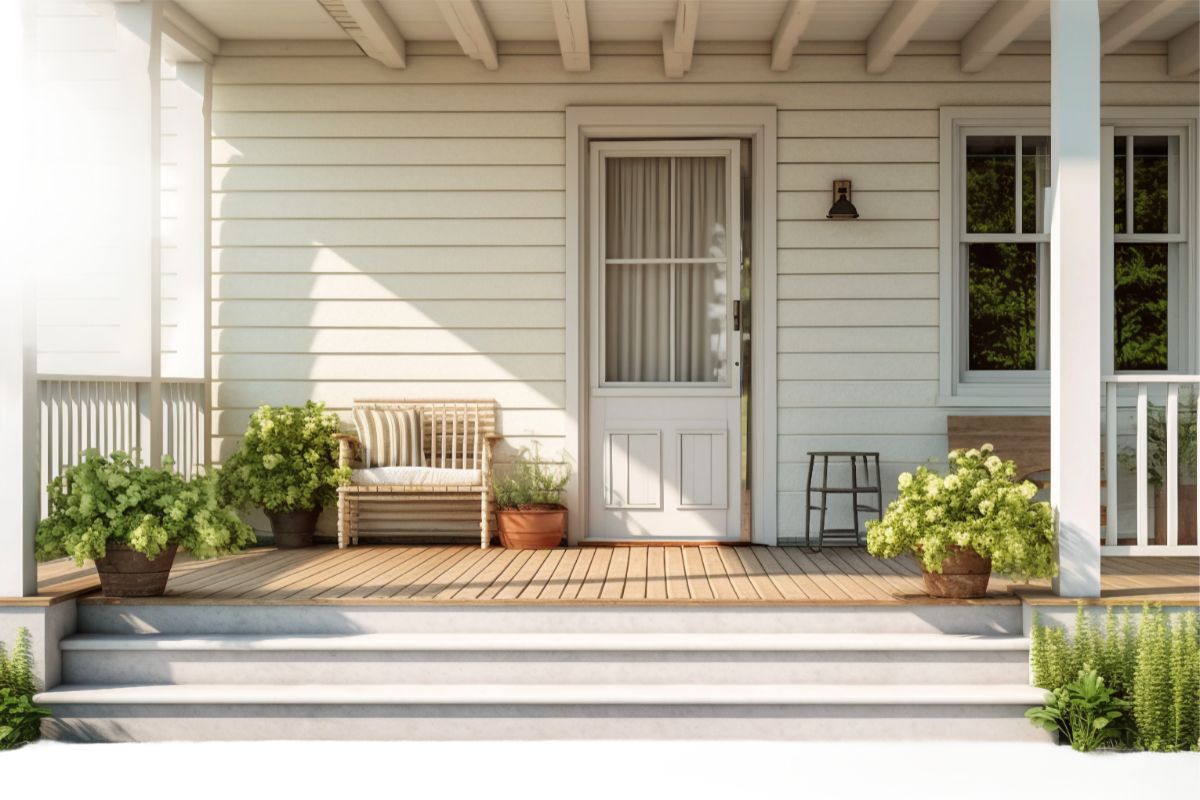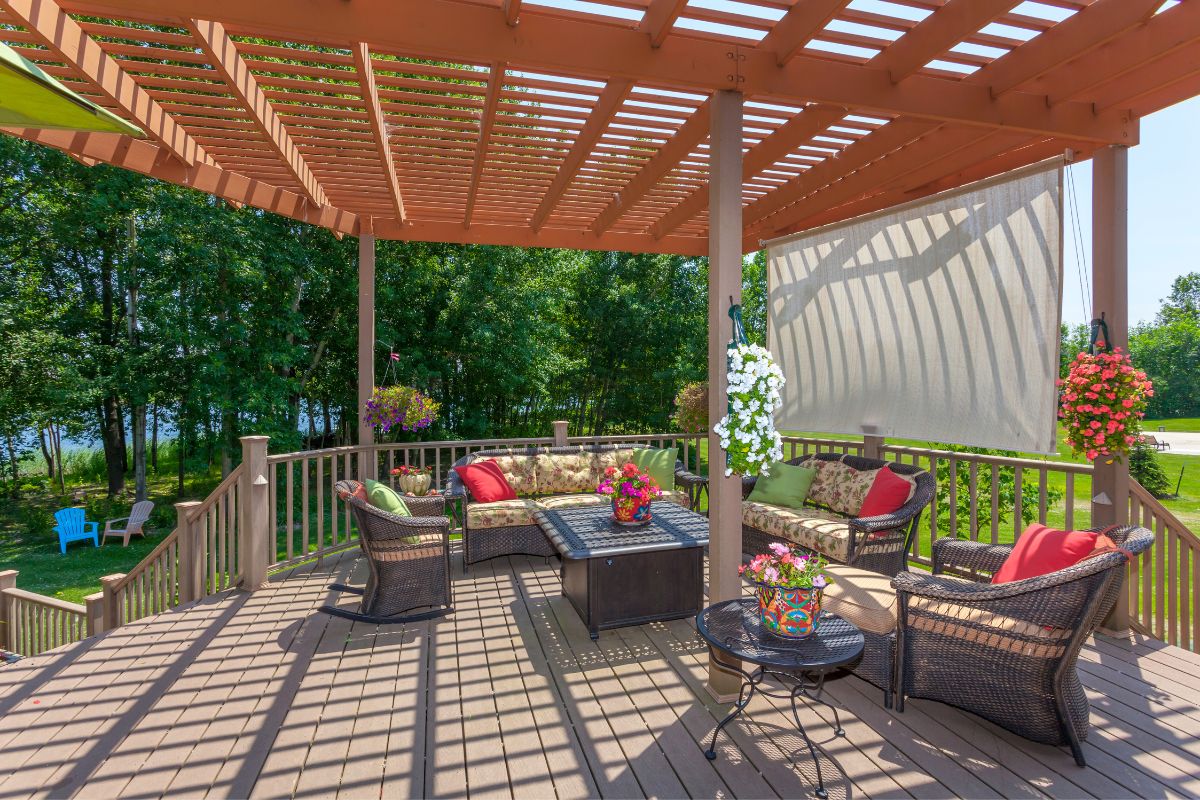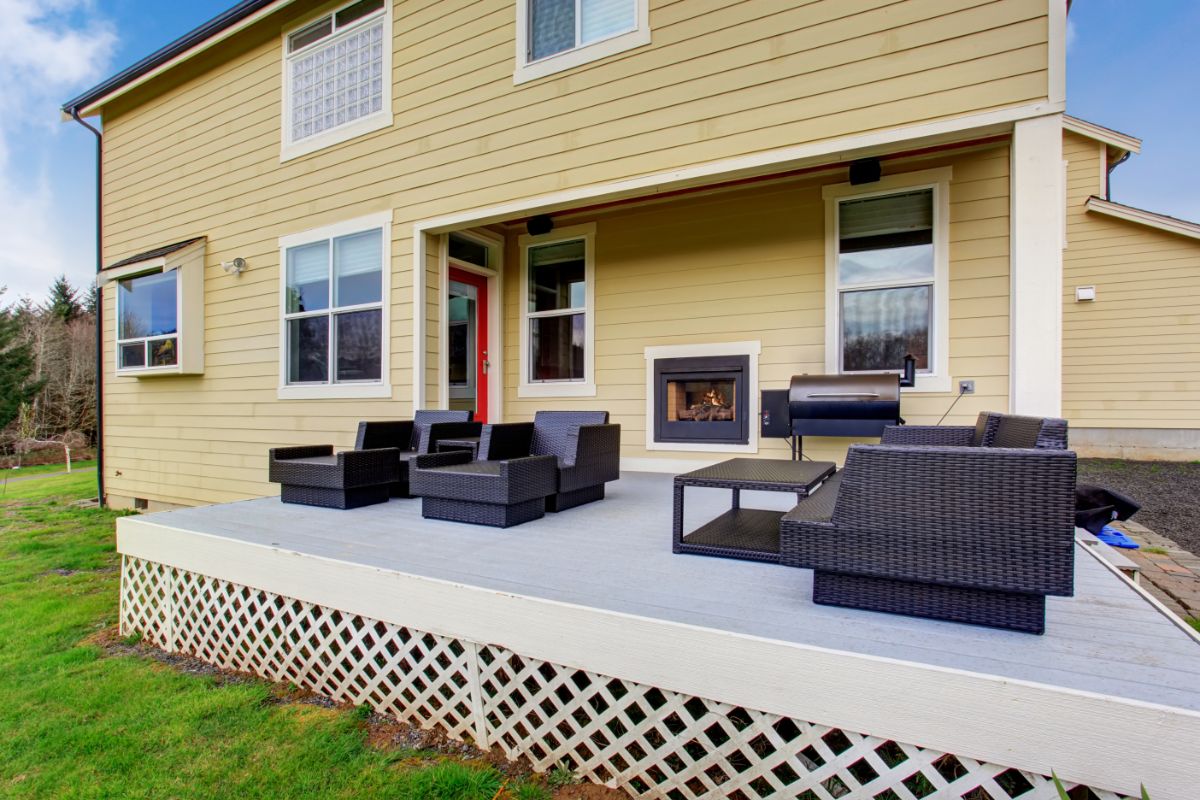Learn how to repair rotted deck board with this guide! Tips on replacing, sealing, and preventing future damage for a safer, stronger deck.
If you own an outdoor deck, you are undoubtedly aware that decks require care and maintenance to keep your cherished property in good condition. One of the most important things to look out for is dry rot and know what to do if your deck is decaying. Dry rot is a fungus that causes portions of the wood to lose their strength, resulting in wood deterioration. Dry rot is very harmful to outdoor hardwood decks since it may eat away at the deck’s base while also causing the deck to deteriorate because the fungi can move fast throughout the deck. You can consult a Prescriptive Guide for your Wood Deck to determine the best wood and components for a long-term solution. solution. However, if you don’t have the time to do the research yourself, you can always consult a deck building professional.

Here are some of the reasons why your deck is decaying.
Main Cause of Rot
Moisture is the root cause of rot. Ground contact of deck supports, leaking gutters, over-watered flowerpots, insufficient ventilation beneath the deck, and deck planks that are too close together are all potential sources.
Brown Rot
Brown rot, which is much less frequent in the highlands, is caused by fungus that produce enzymes that degrade the wood’s carbohydrate structure. This is characterized by black wood that has been broken across the grain into cubic fragments. When the boards break apart beneath the touch, it may be very alarming.
White Rot
When you look beneath a deck, you will frequently notice white rot (rarely on the upper surfaces since it is destroyed by UV in daylight). The fungus damages the structural qualities of the wood as it develops by secreting enzymes that convert wood cells into glucose, which the fungus consumes as sustenance. Water standing between the boards and the joist causes most deck joists to become spongy on their tops first, just beneath the boards. The decks are still usable until the first 3/4 becomes spongy; at that point, it is necessary to replace the joists and/or the deck.
Green Mold
Green mold is simply algae/lichen and is not a fungus in the traditional sense. Green mold does not cause structural damage on its own, but it might indicate that circumstances are favorable for other types of rot. In our experience, a deck that has a lot of green mold on it is typically in terrible shape.
Deck Age
As your deck ages, its characteristics deteriorate and must be replaced. The older the structure, the more likely it may have flaws that are difficult to fix.
After over 10 years, natural woods such as cedar and pine frequently succumb to moisture damage. Composite decking materials, such as those used by Newton Deck Builders, may last 20-30 years. If your deck is old, replacing it could be a good idea.
Black Mildew
If you see black patches or a lot of black spots, you have mildew, a type of mold caused by moisture. It’s common on new unstained decks, or on new decks that have been stained with a less expensive stain that has little or no fungicide incorporated in. You may temporarily eliminate it by washing the top surface with weak bleach. We would propose a proprietary deck repair and replacement on the bottom of the boards so that it can withstand rain for a longer period of time.

Rot may be avoided by keeping the region dry and unfriendly to the environment. Here are some pointers:
- Use flashing where the wall meets the deck to ensure proper ventilation and drainage. This reduces standing water and water penetration into the home.
- Ensure that the deck is re-stained on a regular basis. Whenever it is gray, or before it is gray. The stain serves as a fungicide as well as a moisture barrier.
- Apply fungicide or weak bleach on a regular basis. At the very least, severe pathogens below the deck should be treated with a specialized deck fungicide.
- Clean out your gutters before the rains come so they don’t overflow onto your deck. Consider using “Guttergards” may be the best option.
Related Post: How To Maintain Your Pool Deck?
Newton Deck Builders in Newton & other areas in MA offers design and installation services for new decks, as well as repair and restoration services for existing decks. If you have questions about repairing or replacing your deck, contact us today.
